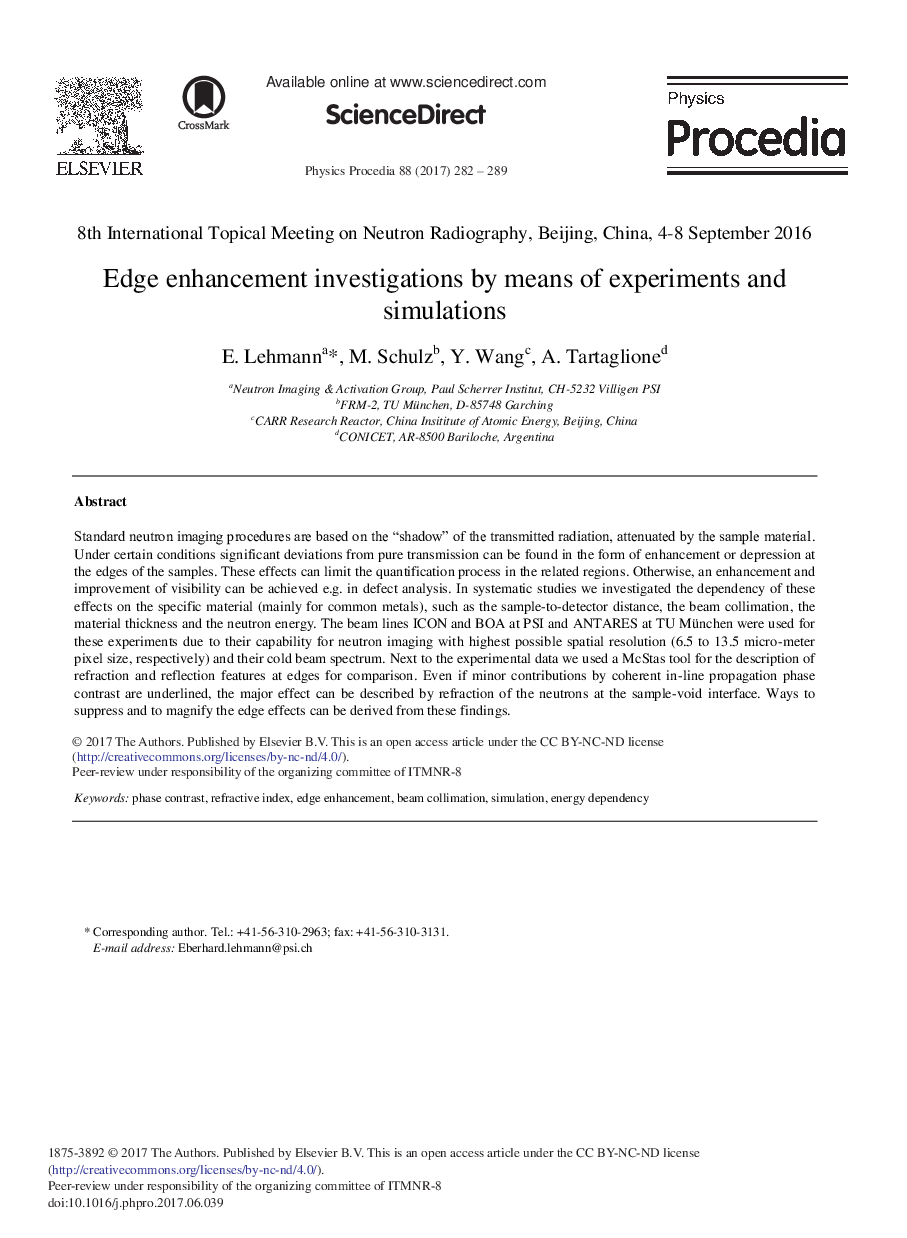| Article ID | Journal | Published Year | Pages | File Type |
|---|---|---|---|---|
| 5497219 | Physics Procedia | 2017 | 8 Pages |
Abstract
Standard neutron imaging procedures are based on the “shadow” of the transmitted radiation, attenuated by the sample material. Under certain conditions significant deviations from pure transmission can be found in the form of enhancement or depression at the edges of the samples. These effects can limit the quantification process in the related regions. Otherwise, an enhancement and improvement of visibility can be achieved e.g. in defect analysis. In systematic studies we investigated the dependency of these effects on the specific material (mainly for common metals), such as the sample-to-detector distance, the beam collimation, the material thickness and the neutron energy. The beam lines ICON and BOA at PSI and ANTARES at TU München were used for these experiments due to their capability for neutron imaging with highest possible spatial resolution (6.5 to 13.5 micro-meter pixel size, respectively) and their cold beam spectrum. Next to the experimental data we used a McStas tool for the description of refraction and reflection features at edges for comparison. Even if minor contributions by coherent in-line propagation phase contrast are underlined, the major effect can be described by refraction of the neutrons at the sample-void interface. Ways to suppress and to magnify the edge effects can be derived from these findings.
Related Topics
Physical Sciences and Engineering
Physics and Astronomy
Physics and Astronomy (General)
Authors
E. Lehmann, M. Schulz, Y. Wang, A. Tartaglione,
